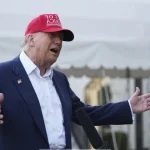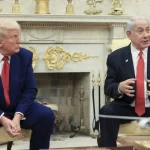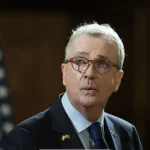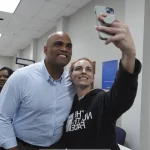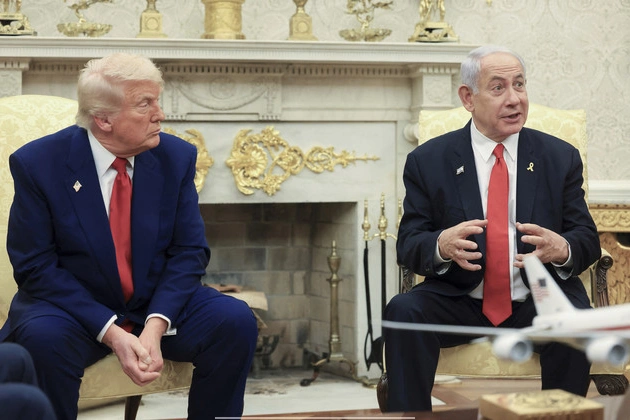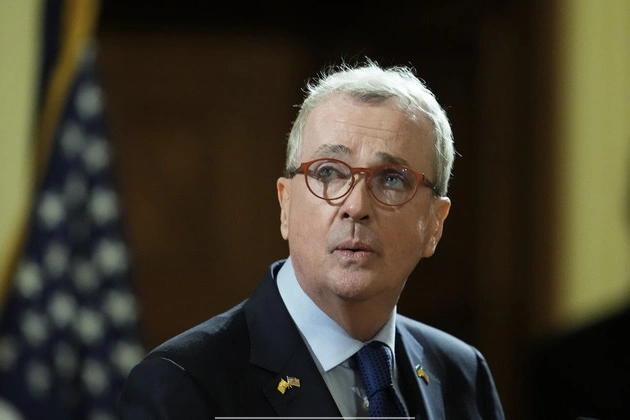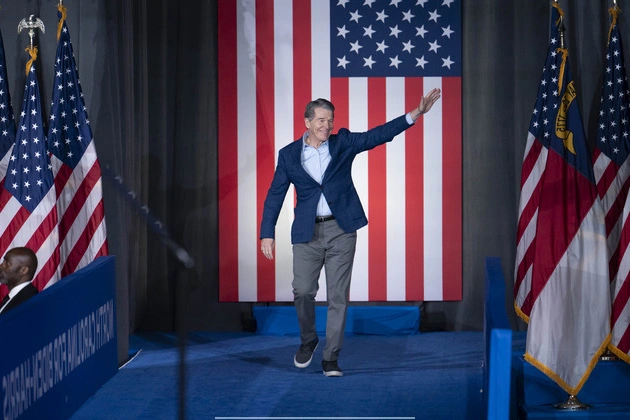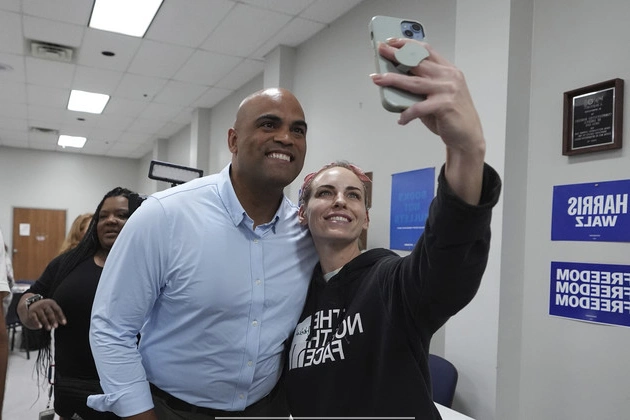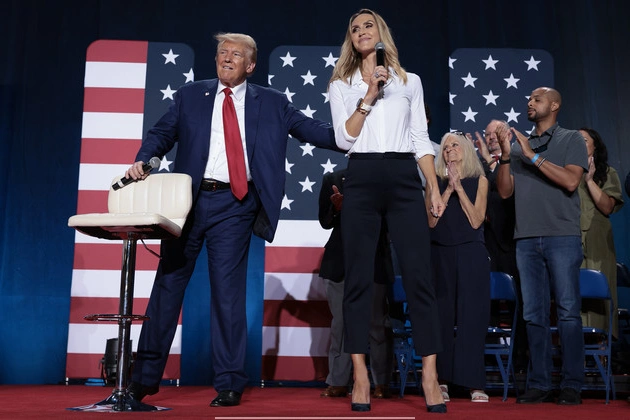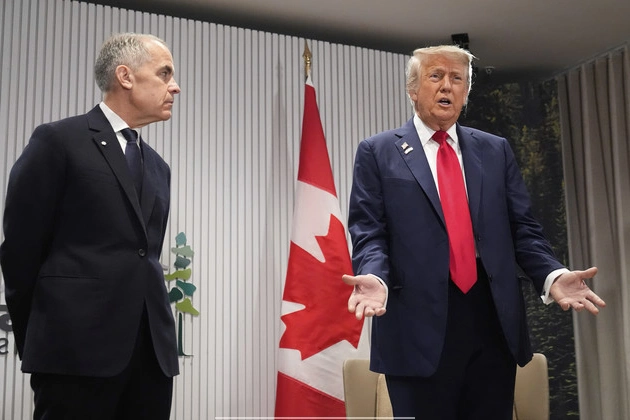
KANANASKIS, Alberta—President Donald Trump pushed U.S. relations with Canada to the brink with a barrage of damaging tariffs, political attacks and relentless talk of taking it as the 51st state by “economic force.”
The man Canadians elected to counter the effort is now quietly trying to reel him back.
Canadian Prime Minister Mark Carney has privately courted Trump in the weeks leading up to his arrival here for the G7 summit of the world’s major industrial powers, calling and texting with the president and his allies as he tries to ease tensions between their nations and lay the groundwork for a trade truce.
Building Bridges Amidst Trade Turbulence
Their largely cordial relationship was on display Monday as Carney opened a one-on-one meeting with Trump by wishing him a happy belated birthday and emphasizing the need for continued close cooperation between the two nations.
He then stood silently as Trump took a range of questions from reporters on trade and foreign affairs before finally stepping in to politely but firmly shut down the back and forth.
“I’ll just exercise my role, if you will, as G7 chair since we have a few more minutes with the president and his team,” Carney said.
Navigating a Delicate Diplomatic Landscape
The charm offensive, which was described by two people familiar with the matter who were granted anonymity to discuss private conversations, now faces a critical test. On his home soil, Carney is trying to not only keep the peace between Trump and the rest of the G7 leaders but also delicately defend his own nation against the risk of an escalating tariff war and a resumption of the takeover threat.
“The stakes are much higher for Carney than they are for Trump,” said one person close to the White House, who was granted anonymity to discuss the leaders’ fragile rapport. “He’s been very deliberate and very careful. But it’s hard for any Canadian leader who’s subject to these political pressures.”
Strategic Negotiations and Future Prospects
The summit comes as Trump seeks progress on a flurry of trade deals, including his administration’s negotiations with Canada over the steep levies it applied to steel and aluminum, cars and all manner of other goods coming across the border. Those tariffs cratered Canadian goodwill for its closest neighbor and ally, sparking retaliatory measures and fueling Carney’s sudden rise to power.
Since taking office in March, the Liberal Party leader has at times sharply criticized Trump and his trade policies, and dismissed his musings of annexing Canada altogether.
“Canada is not for sale,” Carney told Trump in their first meeting at the White House a month ago.
Striking a Balance: Criticism and Engagement
But the prime minister has otherwise taken a softer approach toward Trump, marking a stark departure from his harsh campaign trail rhetoric.
In their discussions, Carney has prioritized rebuilding a relationship strained by Trump’s clashes with then-Prime Minister Justin Trudeau during his first term. That effort is now freighted with even greater economic importance in the wake of the administration’s trade blitz.
Carney has personally taken a lead role in negotiating over trade issues with the U.S., the two people familiar with the matter said. And in the run-up to the G7 summit, he has called around to Trump allies and others who have dealt with the president to seek advice on how best to manage their relationship.
Global Alliances and Future Directions
“I’ve been very impressed with [Carney], and I think Donald Trump is as well,” said Sen. Kevin Cramer (R-N.D.), who speaks with both leaders and had encouraged Carney to start calling Trump directly. “Donald Trump likes that, he’s flattered by direct phone calls, and Mark Carney is a very smart, capable, serious business guy.”
Carney took concrete steps as well to smooth the way for Trump’s arrival, in an effort to avoid a repeat of the tumultuous 2018 Canada-hosted G7 that effectively pitted the president against the group’s other six leaders. The prime minister last week pledged to meet a NATO defense spending target well ahead of schedule, addressing one of Trump’s chief complaints about his Western allies. The move “thrilled” the Trump administration, U.S. Ambassador to Canada Pete Hoekstra later said.
Carney also carefully crafted the summit’s agenda, avoiding an explicit focus on areas like climate change in favor of sessions addressing migration and energy more likely to encourage engagement from Trump and his team. The traditional joint statement signed by all participating countries, called a communique, has been scrapped even as it means Carney’s summit will be historic for its extraordinary acknowledgement of the alliance’s disunity.
Securing Economic Futures Amidst Uncertainty
“The G7 is supposed to be the strongest collection of allied countries in the world,” said Ian Bremmer, president of the global risk assessment firm Eurasia Group. “Yet almost all of those countries actually see Trump in at least some areas as directly adversarial.”
Still, the move is also a recognition of how quickly all that groundwork could unravel — and the upper hand that Trump holds in determining the countries’ economic futures. Though Carney has said progress at the G7 meeting is critical to reaching an economic-and-security deal between the two nations, U.S. officials have remained far more circumspect.
Adapting to Evolving Trade Dynamics
The president faces a slew of more pressing trade concerns, including advancing negotiations with Japan and other allies now just weeks away from the White House’s self-imposed deadline for clinching deals or else reimposing hefty “reciprocal” tariffs sure to fluster the financial markets.
“The foreign partners — or at least some of them — are very focused on that day,” one former senior U.S. trade official, granted anonymity to discuss the private negotiations, said of Trump’s July 8 deadline. The U.S., the former official added, “is going to do a lot of this transactionally” as nations rush to lock in a deal.
Global Challenges and Diplomatic Balancing Acts
The growing crisis in the Middle East is also now likely to pull Trump and other leaders’ attention toward national security issues that might otherwise have taken a back seat, as Israel and Iran careen toward war.
Yet absent concrete progress on trade, Carney’s chief mission over the next couple days will be to serve as a bridge between Trump and the rest of the G7 — even as he and the rest of the group plot out a future that’s less reliant on their ties with the U.S.
Canada in recent months has sought closer collaboration with the U.K. and other European nations on defense and other national security issues. Carney has invited a slew of other world leaders to the summit as well, including Indian, Brazil and Mexico, in a sign of strengthening ties around the globe.
Building Sustainable Relationships in a Complex World
But that shift will take time, and even then Canada will remain inextricably linked to the U.S. — leaving economic fortunes on both sides of the border dependent on the delicate bond Carney can carve out with Trump.
“The best you can hope for is that the G7 doesn’t make a lot of news,” said Ian Bremmer, president of the global risk assessment firm Eurasia Group. “And that, on the margins, it’s constructive to reduce tensions.”
